Research
Comfort with Social Robots in the Pre-interaction Phase
How does the design of interaction with social robots influence customers’ feeling of comfort and trust? Scientists from the Rothenburg Campus of Ansbach University of Applied Sciences and the Nuremberg Institute for Market Decisions conducted a field experiment in a German retail bank in which a proactive and a passive social robot design were tested.
Social robots are increasingly regarded as innovative tools that can transform customer relationship management in retail banking. In particular, these technologies offer potential solutions to challenges such as the rise of online banking platforms and the complexity of omnichannel customer journeys. Despite their promise, though, customer acceptance remains a critical obstacle. While many studies have explored consumer reactions to robots afer interaction, limited attention has been given to the pre-interaction phase. This phase, where users form perceptions based on the robot’s appearance and presence, significantly influences their usage intention. To achieve this objective, the comfort theory was employed. Comfort has a significant positive effect on the intention to use robots, with trust serving a mediating function in this dynamic. Crucially, the social robot acts as an environmental element and directly influences the comfort level of people with its design. This study investigates how comfort, trust, and usage intention can be positively influenced by designing the interaction between social robots and humans accordingly.
Research Objective: Proactive vs. Passive Design
This study focuses on evaluating customer comfort with two distinct interaction initialization designs of the Furhat social robot in the pre-interaction phase. In the passive design, the robot remained silent during the pre-interaction phase, while in the proactive design, the robot initiated the interaction upon detecting participants in its field of perception. In this context, the research aimed to address how the interaction design (proactive vs. passive) impacts customer comfort, trust, and usage intention and what role trust plays as a mediating factor. Comfort was analyzed across psychological, physiological, and holistic dimensions using a standardized Likert scale. Trust and usage intention were also measured alongside several control variables: fear of new technology, experience with social robots, age, gender, and educational background.
Methodology: Field Experiment in the Bank Branch
The experiment involved 128 participants in a retail bank setting using the Furhat social robot, which resembled one of the bank’s founders. Participants interacted with either the proactive or passive design and completed a standardized questionnaire assessing comfort, trust, usage intention, and the control variables. In addition, observers assessed the emotional states of the participants, which consisted of a standard scale for valence, arousal, and dominance as well as a free text field for further observations or comments.
Interpretation: Dual Processing in Proactive vs. Passive Designs
The results can be explained with the help of dual processing theory. This theory distinguishes between automatic and reflective human thought processes: While automatic processes are controlled by emotions and previous associations and require little cognitive effort, reflective processes are conscious and resource-intensive. In proactive designs, automatic processes dominate, which are supported by immediate positive impressions. This aligns with the observed higher levels of psychological comfort and positive emotional valence in the proactive design. In contrast, passive designs encourage reflective decision-making. The passive interaction design required participants to take conscious steps to initiate interaction, engaging the reflective decision-making processes. This design facilitated reflective thinking, enabling participants to build trust through conscious evaluation, which could explain the slightly higher usage intention in the passive design despite lower comfort scores.
MAIN RESULTS
- Participants generally reported low levels of time pressure and fear of new technologies. Most participants had little to no prior experience with social robots. The gender distribution was nearly equal, with a slight majority of female participants, and the older age groups were most prominently represented across the sample.
- The analysis revealed that psychological comfort scored highest overall, with the proactive design outperforming the passive design. Statistical analysis confirmed a significant higher mean for the proactive variant. Physiological comfort and holistic comfort also favored the proactive design, though these differences were not statistically significant. On average, the robot was rated as trustworthy, with the proactive design generating slightly more trust. Interestingly, usage intention was slightly higher for the passive variant, though again without statistical significance. This finding suggests that while comfort improved with the proactive design, it did not translate into higher behavioral intention.
- Observational data highlighted notable differences: Participants interacting with the proactive design smiled more frequently and expressed positive comments about the robot. Similarly, emotional valence was significantly higher for the proactive design, meaning that participants interacting with this design showed higher satisfaction and higher happiness.
KEY INSIGHTS
- For managers, this study highlights the importance of balancing proactive and passive interaction designs when implementing social robots in retail banking. A proactive design encourages psychological comfort and creates positive first impressions, while passive designs enable reflective trust-building, which can enhance usage intention despite lower comfort levels. Managers should consider integrating elements of both designs to address diverse customer preferences and improve the overall acceptance of social robots.
- For consumers, social robots with proactive designs offer a more engaging and intuitive experience. Passive designs, on the other hand, allow greater autonomy so that consumers can interact at their own pace. A dual approach would ensure that consumers can feel comfortable and develop trust at a level they are personally comfortable with, improving the overall user experience.
- The findings suggest growing societal acceptance of social robots and that balancing different interaction initialization designs can increase user intent. Nevertheless, the desire of many customers for human customer service is still evident. Trust also remains a critical factor, which emphasizes the need for interaction designs that prioritize both emotional and reflective engagement.
Project team
- Dr. Carolin Kaiser, Head of Artificial Intelligence, NIM, carolin.kaiser@nim.org
Cooperation partner
- Carina Wiedenhöft, Hochschule Ansbach
- Alexander Piazza, Department of Information Systems, University of Erlangen-Nuremberg, Nuremberg, Germany
- Anna Pilz, Hochschule Ansbach
Contact
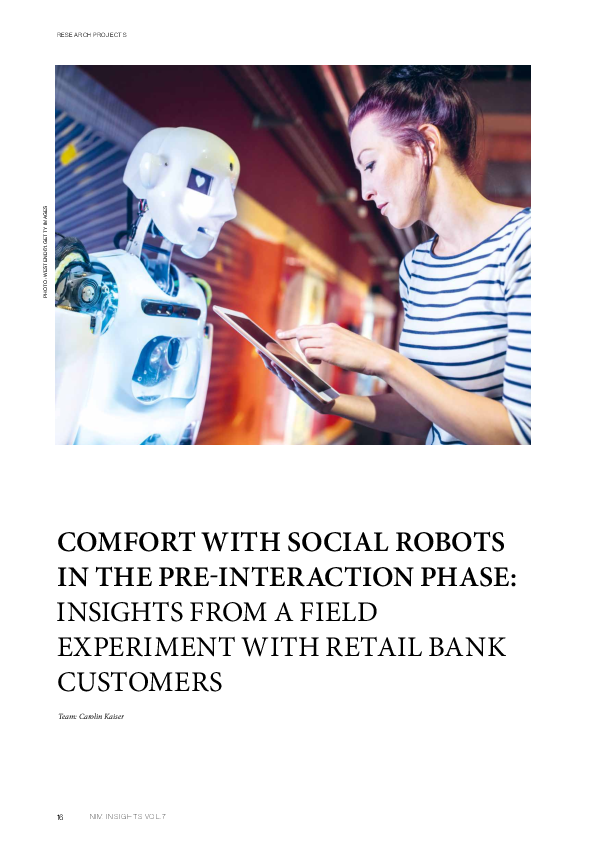

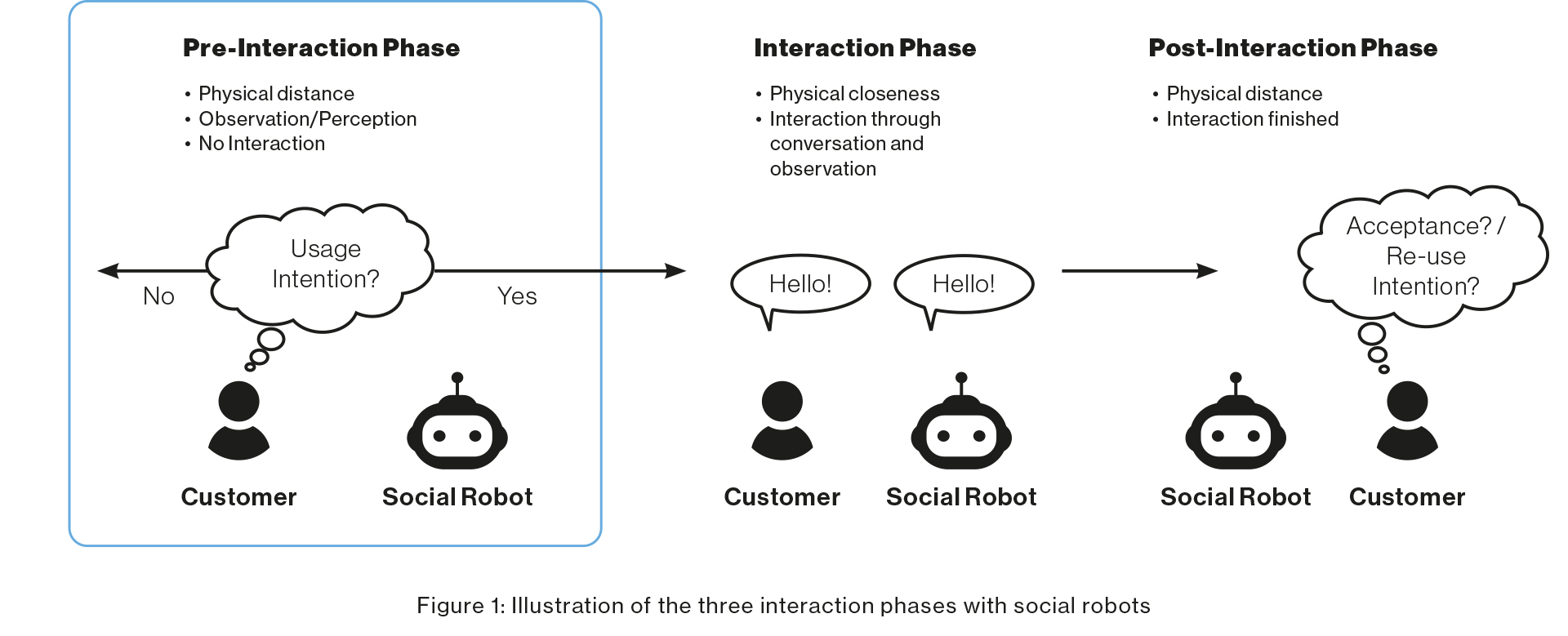
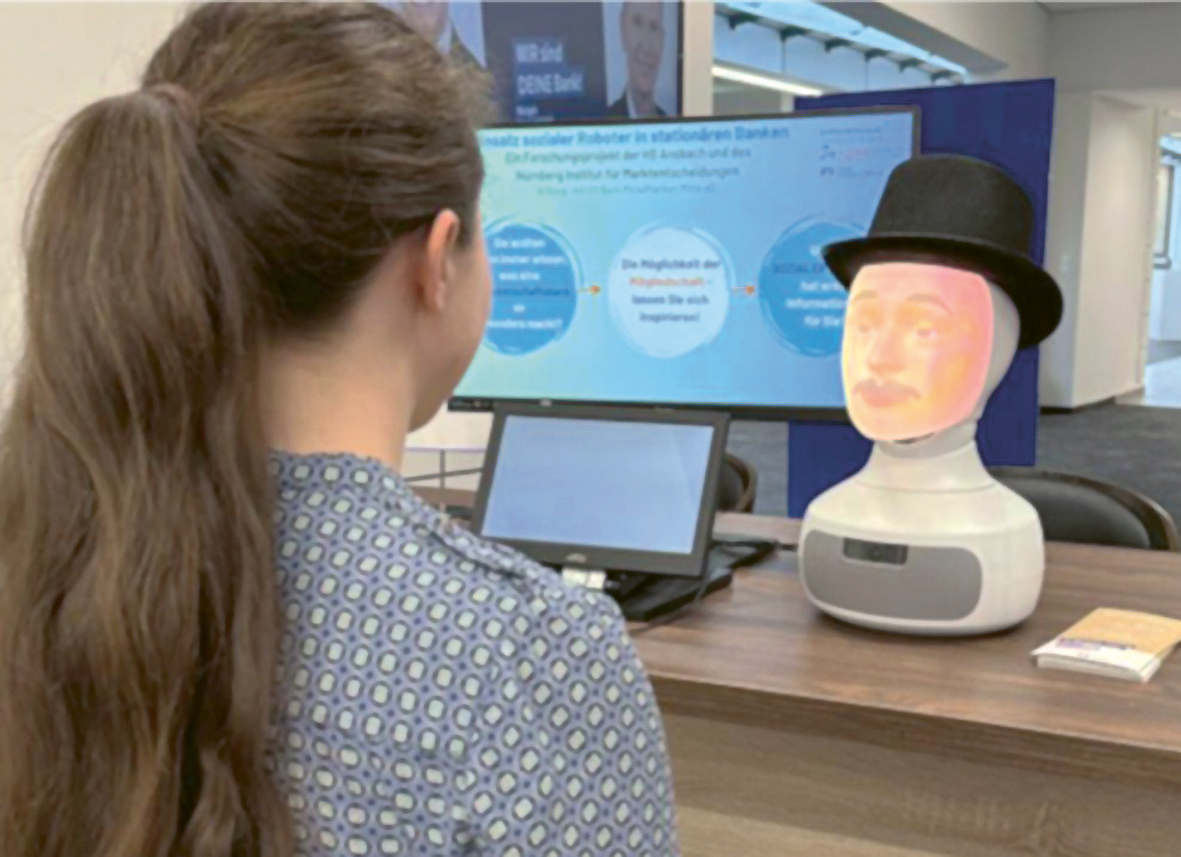
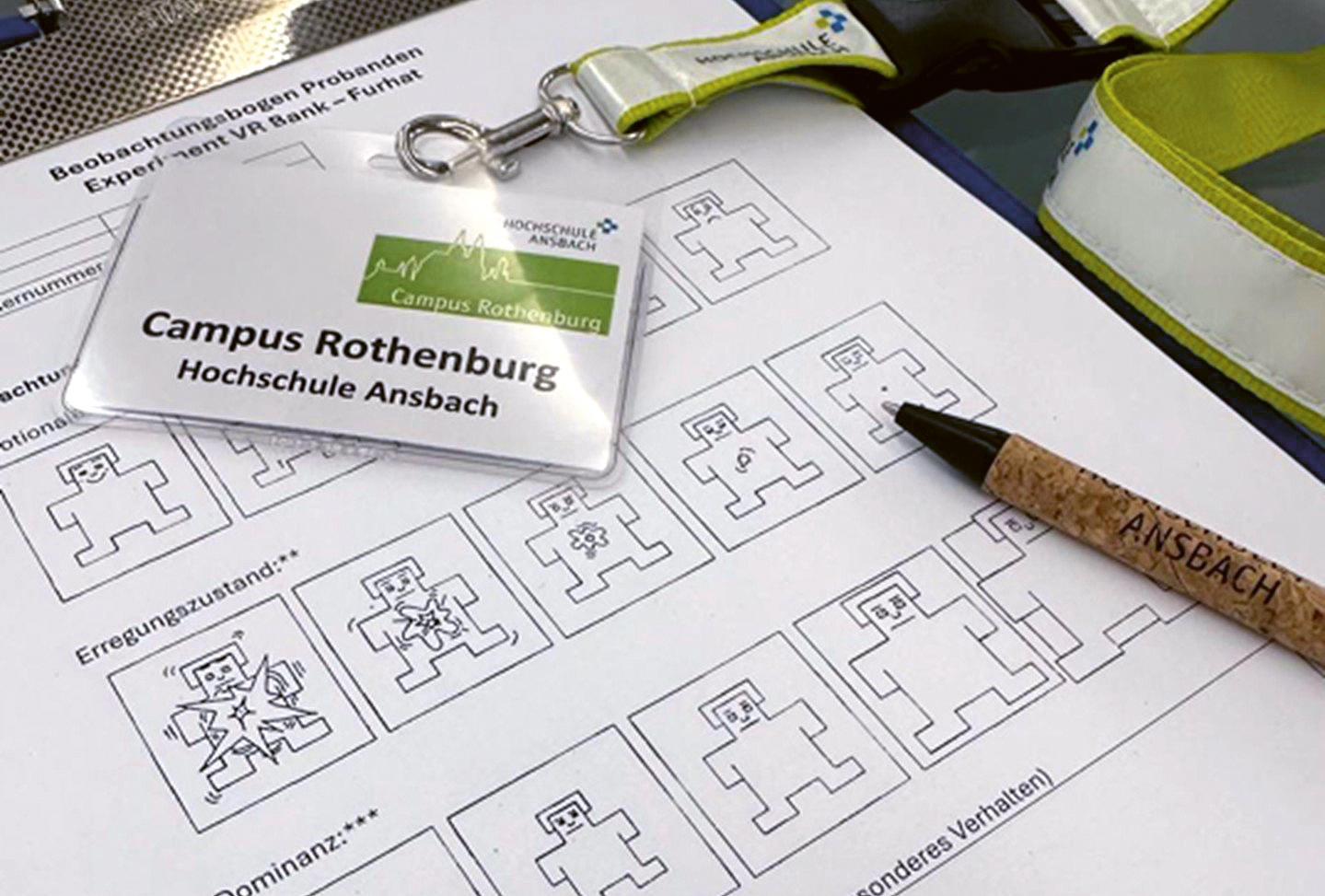
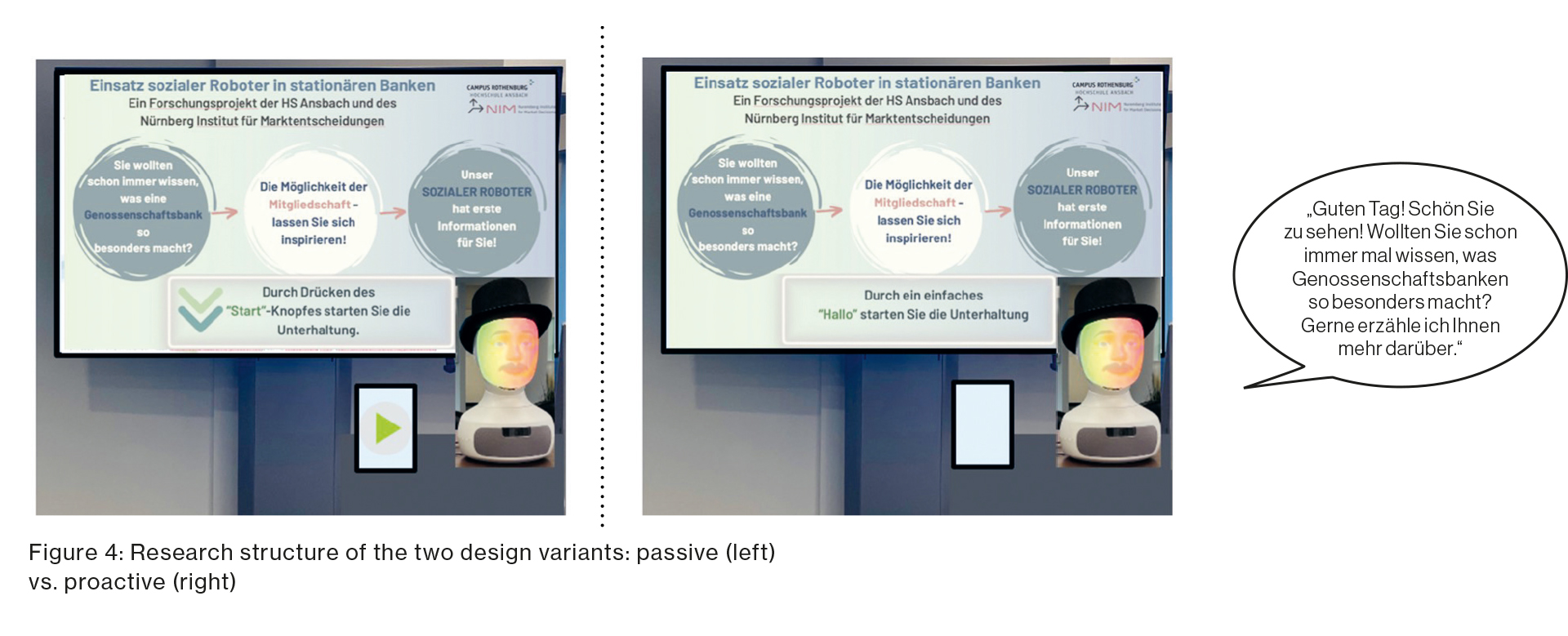
![[Translate to English:] [Translate to English:]](/fileadmin/_processed_/1/2/csm_CK_NIM_01_58bed63910.png)